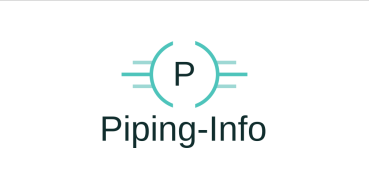SPACING REQUIRED BETWEEN UNITS & EQUIPMENTS
Consider the following when determining the layout and the separation required:
• High hazard operations
• Grouped operations
• Critical operations
• Number of personnel at risk
• Concentration of property and business interruption values
• Equipment replacement and installation time
• Interdependency of facilities
• Critical customer or supplier relationships
• Market share concerns
• Fire and explosion exposures
• Corrosive or incompatible materials exposures
• Vapor cloud explosions
• Sources of ignition
• Maintenance and emergency accessibility
• Drainage and grade sloping
• Prevailing wind conditions
• Natural hazards and climate
• Future expansions
• External exposures
Review the various hazards and loss potentials to establish the degree of separation required
between units and equipment. Consult Tables 1, 2 and 3 in this guide for minimum spacing guidelines
based on fire and vessel explosion hazards. Increase spacing where appropriate.
Consider the following when determining the layout and the separation required:
• High hazard operations
• Grouped operations
• Critical operations
• Number of personnel at risk
• Concentration of property and business interruption values
• Equipment replacement and installation time
• Interdependency of facilities
• Critical customer or supplier relationships
• Market share concerns
• Fire and explosion exposures
• Corrosive or incompatible materials exposures
• Vapor cloud explosions
• Sources of ignition
• Maintenance and emergency accessibility
• Drainage and grade sloping
• Prevailing wind conditions
• Natural hazards and climate
• Future expansions
• External exposures
Review the various hazards and loss potentials to establish the degree of separation required
between units and equipment. Consult Tables 1, 2 and 3 in this guide for minimum spacing guidelines
based on fire and vessel explosion hazards. Increase spacing where appropriate.
 |
| Inter-Unit Spacing Recommendations For Oil And Chemical Plants |
 |
| Intra-Unit Spacing Recommendations For Oil And Chemical Plants |
 |
| Storage Tank Spacing Recommendations For Oil And Chemical Plants |
Calculate the vapor cloud explosion overpressure circles. Where applicable, base the minimum spacing required between units upon the following criteria: • Do not locate critical equipment of adjacent units within the 3 psi (0.21 bar) overpressure circle. • Design equipment or structures of adjacent units within the 1 psi (0.07 bar) overpressure circle to withstand the calculated vapor cloud overpressure. If the minimum spacing requirements based on a vapor cloud explosion differ from the minimum spacing required by the spacing tables, use the greater of the two. REFERENCES 1. Hazard Survey of the Chemical and Allied Industries, Technical Survey No. 3, 1968, American Insurance Association, New York, NY. An Engineer’s Guide To Process-Plant Layout, F.F. House, July 28, 1969, Chemical Engineering, McGraw Hill, New York,NY. Process Plant Layout, by J.C. Mecklenburgh, John Wiley & Sons, New York, NY. Loss Prevention In The Process Industries, F. P. Lees, Volumes 1 & 2, Butterworths, Boston, MA. Loss Prevention Fundamentals For The Process Industry, O. M. Slye Jr., Loss Prevention Symposium, March 1988, American Institute of Chemical Engineers, New York, NY. NFPA 30-2000, Flammable And Combustible Liquids Code, National Fire Protection Association, Quincy, MA. NFPA 58-2001, Liquefied Natural Gas, National Fire Protection Association, Quincy, MA. 2. OVERVIEW, GE Global Asset Protection Services. 3. NFPA 496-1998, Purged And Pressurized Enclosures For Electrical Equipment In Hazardous (Classified) Locations, National Fire Protection Association, Quincy, MA. 4. API RP 521-1982: Guide For Pressure-Relieving And Depressurizing Systems, American Petroleum Institute, Washington, DC. 5. Center for Chemical Process Safety, American Institute of Chemical Engineers, New York, NY. 6. Fire & Explosion Index, Hazard Classification Guide, Dow Chemical Company, Sixth edition, available from the American Institute of Chemical Engineers, New York, NY. 7. API RP 752-1995: Management of Hazards Associated with Location of Process Plant Buildings, American Petroleum Institute, Washington, DC. |







KEEP READING
ReplyDelete